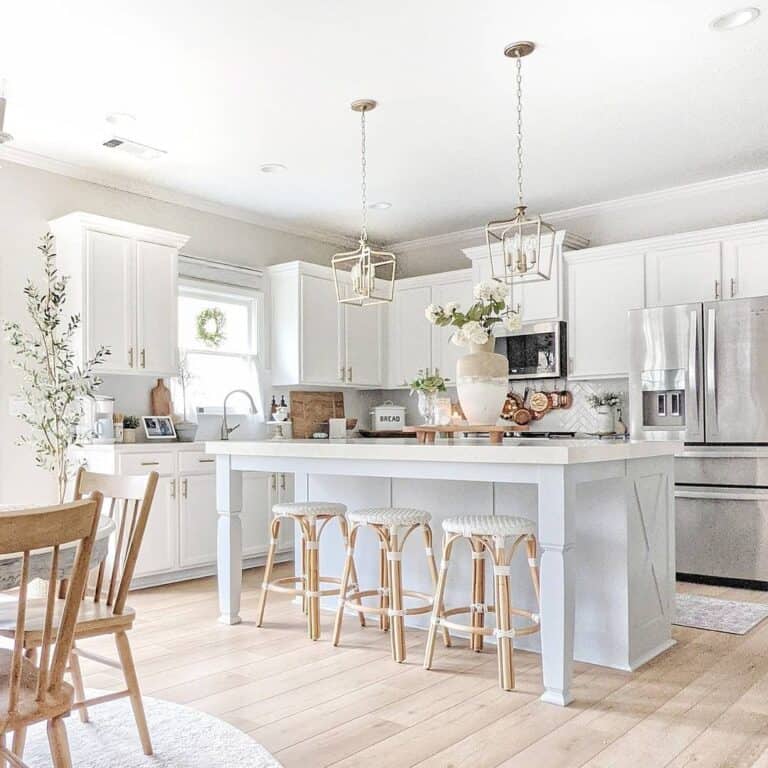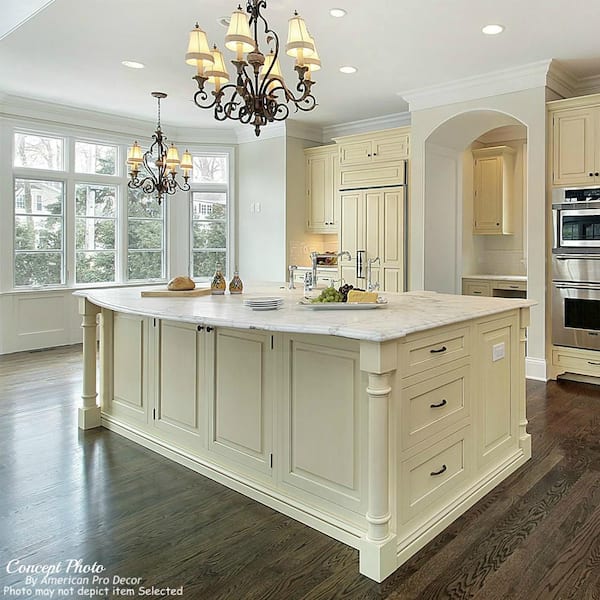Sophisticated Kitchen Island Legs to Complement Your Counter top
Wiki Article
An Overview to Selecting the Perfect Kitchen Area Island for Your Home
Understanding your kitchen area's spatial characteristics is the first step, making sure that the island fits perfectly without interfering with the circulation. The option of finishes and products also plays a crucial function in harmonizing the island with your cooking area's total design.Evaluating Your Area
Prior to picking a cooking area island, it is vital to completely analyze your room to ensure the addition will certainly be both useful and aesthetically pleasing. Begin by measuring the available location, including the size, size, and height of the cooking area. Accurate measurements are important to stay clear of acquiring an island that bewilders the area or one that is overmuch little.Think about the existing layout and how the island will certainly incorporate with the current web traffic flow. A well-placed island should not block pathways or impede accessibility to necessary devices, such as the fridge, oven, and sink. Leave adequate clearance room-- usually around 36 to 48 inches on all sides-- to allow for comfy movement and work space effectiveness.
Following, assess the all-natural light and sightlines within your kitchen area. An island that blocks a window or interferes with visual communication can make the space feel confined and dark. Consider exactly how the island's positioning will certainly influence illumination and presence, guaranteeing it improves instead of interferes with the cooking area's ambiance.
Figuring Out the Purpose
Figuring out the objective of your kitchen island is a critical step in guaranteeing it meets your particular demands and choices. Before delving into layout or dimension considerations, it is important to clarify what primary function the island will certainly offer in your kitchen. Will it be a central center for dish prep work, a casual dining location, or perhaps an extra storage space solution?For those that enjoy cooking, integrating devices such as a cooktop or sink could be needed. In addition, ample counter room for chopping and mixing, in addition to accessible storage for kitchen tools and ingredients, can transform the island into an efficient workstation. On the other hand, if the island is meant to serve or assist in social interactions as an eating area, seating arrangements become critical. In this situation, making sure sufficient legroom and surface for comfortable dining experiences is essential.

Choosing the Right Size
Choosing the best size for your cooking area island is an equilibrium of performance and area optimization. An excellent kitchen island ought to supply enough work space while making certain that activity around the cooking area continues to be unblocked. Begin by gauging your cooking area room; a minimal clearance of 36 to 42 inches around the island is necessary to allow for comfy motion and accessibility.The measurements of the island must reflect its desired use. If the island will offer mostly as a prep location, a size of 24 to 36 inches might link be enough. Nonetheless, if it is to accommodate seating, you need to take into consideration a larger dimension, normally measuring a minimum of 48 inches in width. Islands committed to home appliances or sinks may call for additional area to house these attributes appropriately.

Finally, make sure that the island's size enhances the general cooking area design, avoiding any frustrating presence that might diminish the cooking area's aesthetic and energy - kitchen island legs. Cautious planning and specific dimensions will assist you accomplish a unified and efficient kitchen environment
Finding Materials and Finishes
After establishing the appropriate size for your cooking area island, the following step includes picking suitable materials and finishes. The selection of products dramatically impacts both the aesthetic charm and performance of your kitchen area island. Popular products for kitchen counters consist of quartz, granite, and butcher block, each offering unique advantages.Along with the countertop, consider the products for the space station. Solid timber uses a classic, strong look, while stainless steel offers a sleek, modern look and is simple to clean. Repainted coatings can introduce a sprinkle of shade, with choices ranging from low-key pastels to bold, lively colors.
Pay interest to the toughness of coatings, especially in high-traffic areas, to keep the island's look over time. Selecting the ideal materials and coatings will enhance both the functionality and visual allure of your kitchen area island.
Incorporating Functional Features
Integrating useful attributes right into your cooking area island can substantially improve its utility and benefit, changing it into a versatile focal point of your kitchen area. One essential function to think about is additional storage space. Integrating cupboards, drawers, and open shelving can give much-needed space for cookware, utensils, and little devices, helping to maintain a clutter-free environment.An additional important enhancement is an integrated sink or cooktop, which can streamline dish prep work and clean-up procedures. A sink can help with tasks such as washing veggies and cleaning recipes, while a cooktop can enable cooking directly on the island, cultivating a more interactive and social food preparation experience.
Think about including seating options, particularly if your kitchen area increases as a casual dining location. Bar feceses or built-in benches can transform the island right into a multifunctional room for dishes, research, or casual gatherings.
kitchen island legs Lastly, integrating electric outlets into your kitchen area island can improve its functionality. Electrical outlets give convenient access for small kitchen appliances, charging stations for electronic tools, and added lights alternatives.
Verdict

Before choosing a cooking area island, it is important to completely examine your area to make certain the enhancement will certainly be both practical and visually pleasing.Choosing the ideal dimension for your kitchen area island is a balance of performance and area optimization. kitchen island legs. A suitable cooking area island need to give enough workspace while making sure that motion around the cooking area continues to be unimpeded.Integrating practical attributes right into your kitchen area island can significantly improve its energy and benefit, changing it right into a versatile centerpiece of your kitchen area.In verdict, picking the excellent kitchen island requires a detailed assessment of the available room, clearness concerning its primary function, and mindful consideration of the appropriate dimension and materials
Report this wiki page